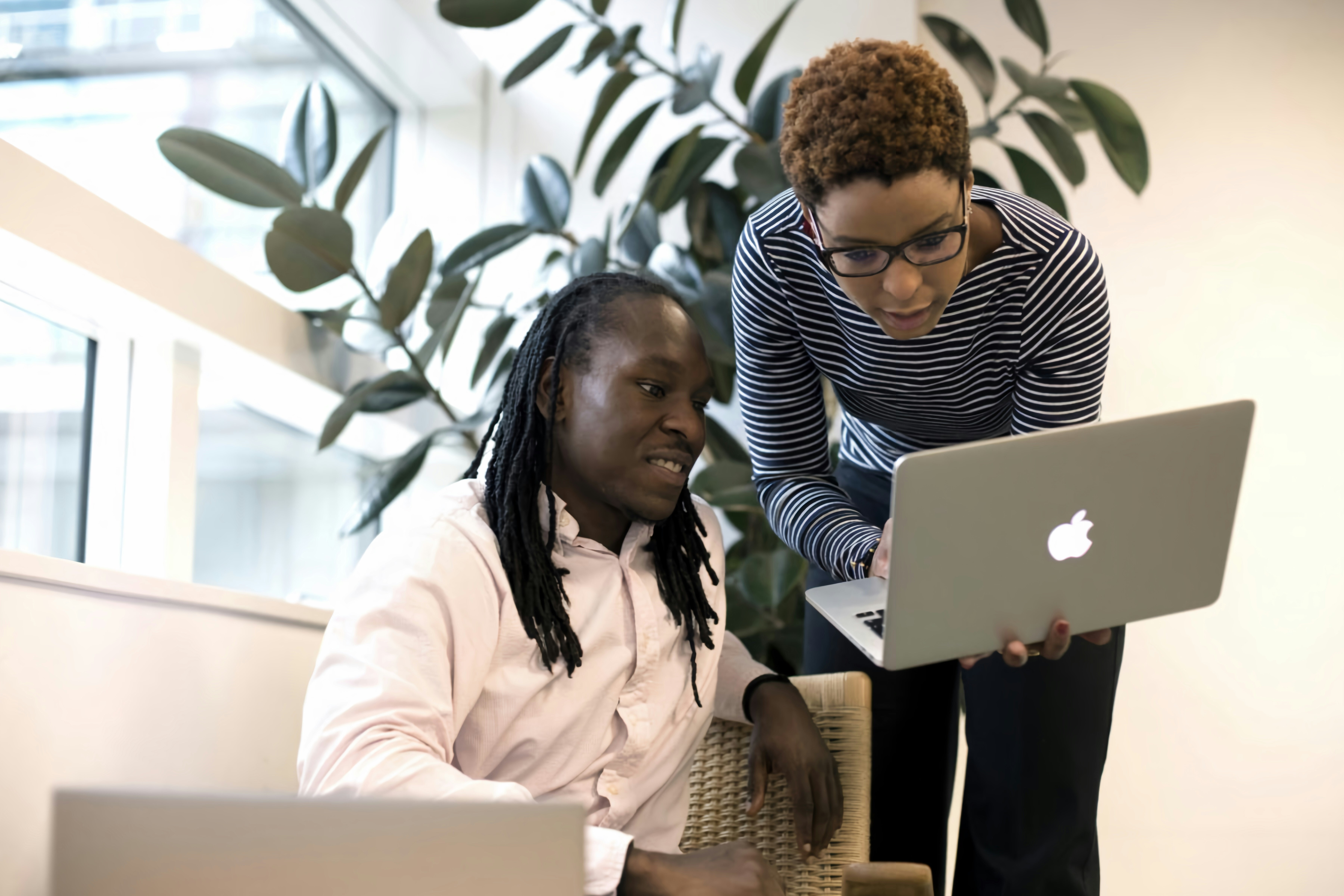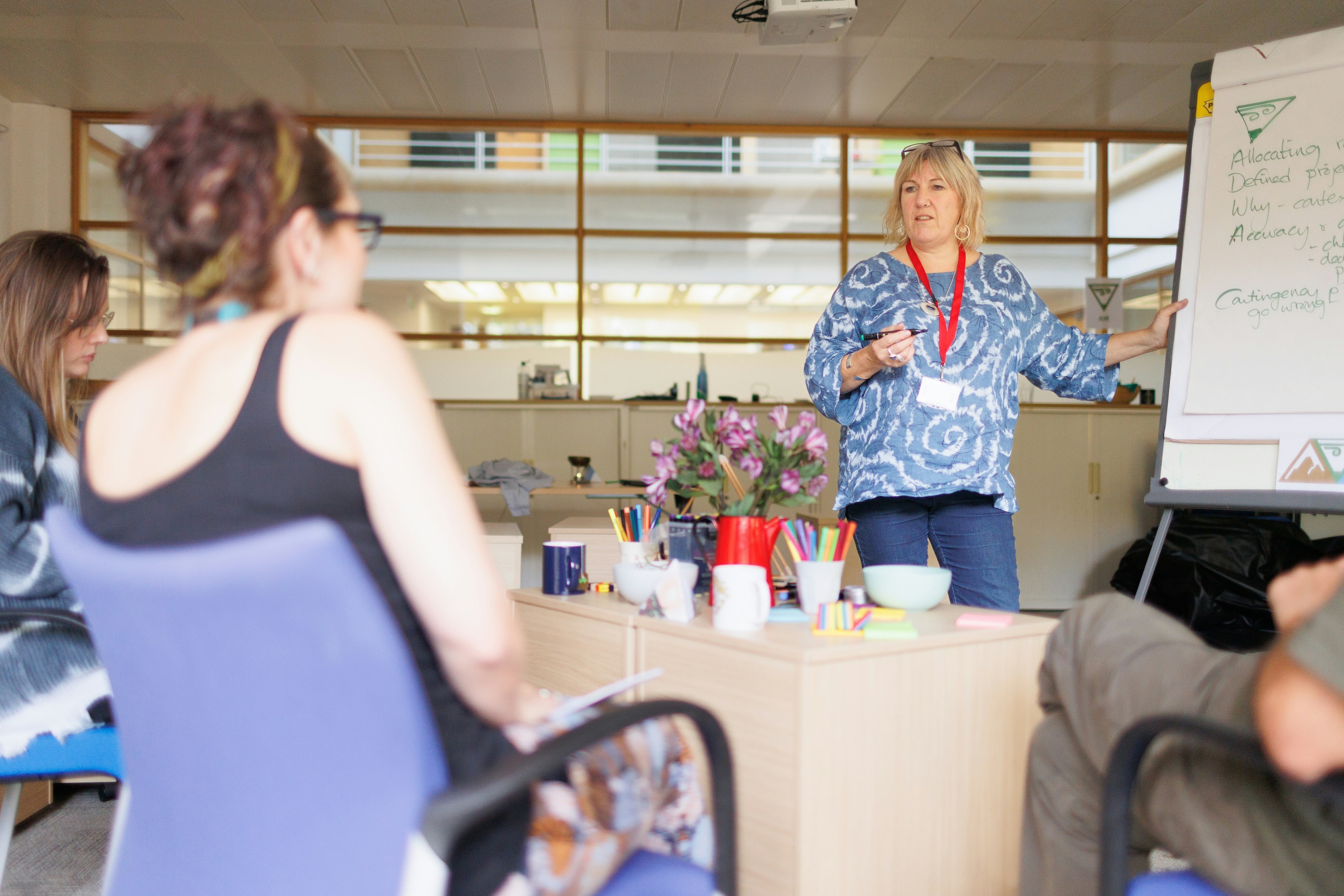Bringing back curiosity: How digital tools can help us rethink education

Digital tools can be used to foster curiosity and creativity in education. Image: Getty Images
- Curiosity has always been an important trait, but in today's complex world it's indispensible.
- Our education systems, however, focus on "teaching for the test" too often, eschewing curiosity and creativity.
- Tools like Interactive Digital Narratives and systems thinking and mapping can help us re-think how we educate minds for a complicated, multivariate world.
Technological development and interconnectedness are advancing rapidly — and so is the demand for ever-more innovations. To meet the demand for solutions in today's world, understanding, learning and experimentation are vital in our organizations. Building them begins with introducing curiosity back into our education systems.
Curiosity is essential for learning, in whatever form it takes, in the school or outside, and with students of all ages, backgrounds, education levels and in all geographies. Curiosity in learning that is empowered by technology, storytelling and systems perspectives gives students the potential to navigate our complex world and find future innovative ways to address interconnected, global challenges.
Curiosity, driven by a desire to explore the novel and the unexpected, is fundamental to our ability to learn and solve complex problems. It encourages engagement with new ideas and the brain is better at learning information which evokes curiosity.
A number of tools hold promise for use in learning settings to build curiosity and enrich learning. Systems thinking and mapping, for example, allow for showing the interconnections between diverse, complex elements in an environment; design thinking and research methodologies foster creativity and experimentation with novel ideas; and Interactive Digital Narratives (IDN), defined as a form of narrative expression in the digital interactive medium, are a tool to have self-directed learning with a meaningful complex story.
The question, then, is how we can use these tools to bring curiosity back to the classroom.
How education for curiosity has changed
While teachers and educators in the past fostered creativity and curiosity with examples from ancient Greece to Humanism — where diverse and imaginative approaches emphasized the study of classical texts and critical thinking — today, institutions are increasingly "teaching to the test."
To develop social innovations needed for an advancing and challenging world, students from all walks of life need to be able to imagine, reflect, act collaboratively and be curious — none of which are supported through standardized learning alone.
By fostering curiosity, we enhance cognitive development and enable the collaborative creation of innovative solutions, leveraging the intrinsic motivation to explore and understand our world. These definitions of curiosity and classroom transcend traditional learning spaces, definitions of students and methods of learning. Stories, technology, systems understanding, creative brainstorming, active experimentation and reflective practice are all elements to aid in addressing this challenge. This curiosity coupled with deeper understanding of the interconnectedness of social and ecological systems and inclusive diversity of expression, thought and representation contributes to the learning environment and experience.

5 ways to bring curiosity back to the classroom
By leveraging the power of Interactive Digital Narratives (IDNs) and systems thinking and mapping education, we can foster a new generation of learners equipped to tackle global issues with sensitivity, creativity, agency and depth.
This approach is supported by five central ideals:
1. The power of stories in education: Stories have always been a fundamental way humans understand the world and their place within it. Through IDNs, we can create immersive, interactive stories that allow students to explore complex systems and global challenges in an engaging way. Learners make their own path through complex narratives where their choices shape the outcome, which cultivates a sense of agency and responsibility within them. This dynamic approach not only makes learning more enjoyable but also more impactful as they navigate themselves with their own beginnings, ends, and tangents.
2. Interactive technology as a catalyst for change: Interactive technology breaks down traditional barriers in education, offering the potential for personalized learning experiences that adapt to each student's needs. Traditional, linear, static story mediums fall short of representing the complexities of systemic problems, whereas digital technologies offer a solution by enabling the creation of intricate, interactive representations. By integrating IDNs with systems education we can create an environment where students can experiment within safe, simulated spaces. This restriction encourages creativity, as learners must navigate and solve problems within given constraints, mirroring real-world scenarios.
3. The role of systems thinking and mapping: Systems thinking is crucial for understanding and addressing global challenges. By teaching students to see the interconnectedness of social, environmental and economic systems, we empower them to think holistically and act effectively. Often, many of our current thinking models focus on bivariate analysis — examining relationships between two variables or viewing issues in binary terms like true or false, right or wrong. This is a product of standardized testing, which emphasizes simplicity and straightforward answers. However, real-world problems are rarely this simple. Multivariate analysis, which considers multiple variables and their interactions, offers a more accurate understanding of complex issues. Encouraging systems thinking helps students grasp the intricate relationships between various factors, stimulating curiosity and enhancing their ability to tackle complex problems. IDNs facilitate this, allowing learners to visualize and navigate topics and issues in ways that traditional education methods cannot alone.
4. Co-design as a collaborative approach to learning: A co-design approach informed by systems thinking allows educators, students and practitioners to work together to create learning experiences that address transdisciplinary, complex, in-depth and systemic challenges. This method ensures that the educational content is tailored to the needs of diverse learners. Co-design fosters a sense of ownership and commitment among students, enhancing their engagement and motivation.
5. Emphasizing the mutual levers of learning: The transdisciplinary approach aligns with the key levers of learning that both systems education and IDNs emphasize:
Creativity: Interactive narratives encourage imaginative thinking, problem-solving, engagement and fun.
Agency: Learners make meaningful choices, fostering a sense of empowerment, impact and responsibility.
Learner scaffolds: Tailored experiences that can differentiate and guide learners through increasingly complex levels of understanding.
Scope: Comprehensive, diverse and inclusive content ensures that students gain a deep and rich understanding of the subject matter.
Sandboxes: By working in an environment with set boundaries, students learn how to build knowledge, develop innovative solutions, and take risks safely, all while engaging in play.
Bringing curiosity back to the classroom through the integration of IDNs and systems education is more than an educational reform: it is a movement towards equipping the next generation with the skills and mindset needed to address the world's most pressing challenges.
By harnessing the power of stories, interactive technology, systems thinking and co-design, we can create transformative learning experiences that inspire and empower. We can bring curiosity back to the classroom.
Don't miss any update on this topic
Create a free account and access your personalized content collection with our latest publications and analyses.
License and Republishing
World Economic Forum articles may be republished in accordance with the Creative Commons Attribution-NonCommercial-NoDerivatives 4.0 International Public License, and in accordance with our Terms of Use.
The views expressed in this article are those of the author alone and not the World Economic Forum.
Forum Stories newsletter
Bringing you weekly curated insights and analysis on the global issues that matter.
More on Education and SkillsSee all
Jumoke Oduwole and Abir Ibrahim
November 11, 2025





